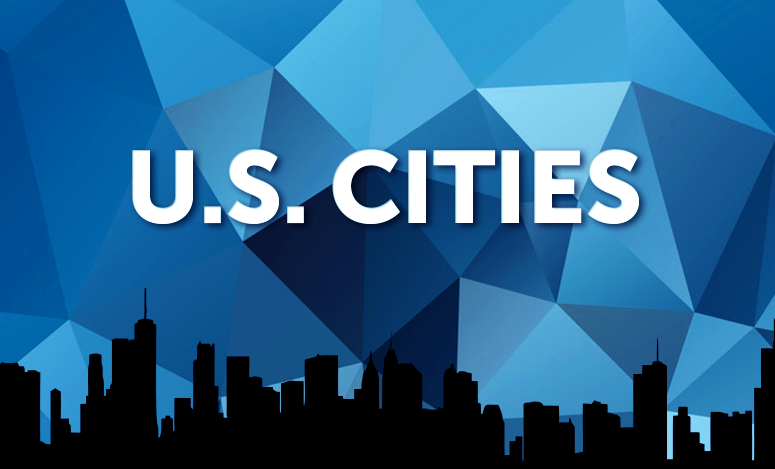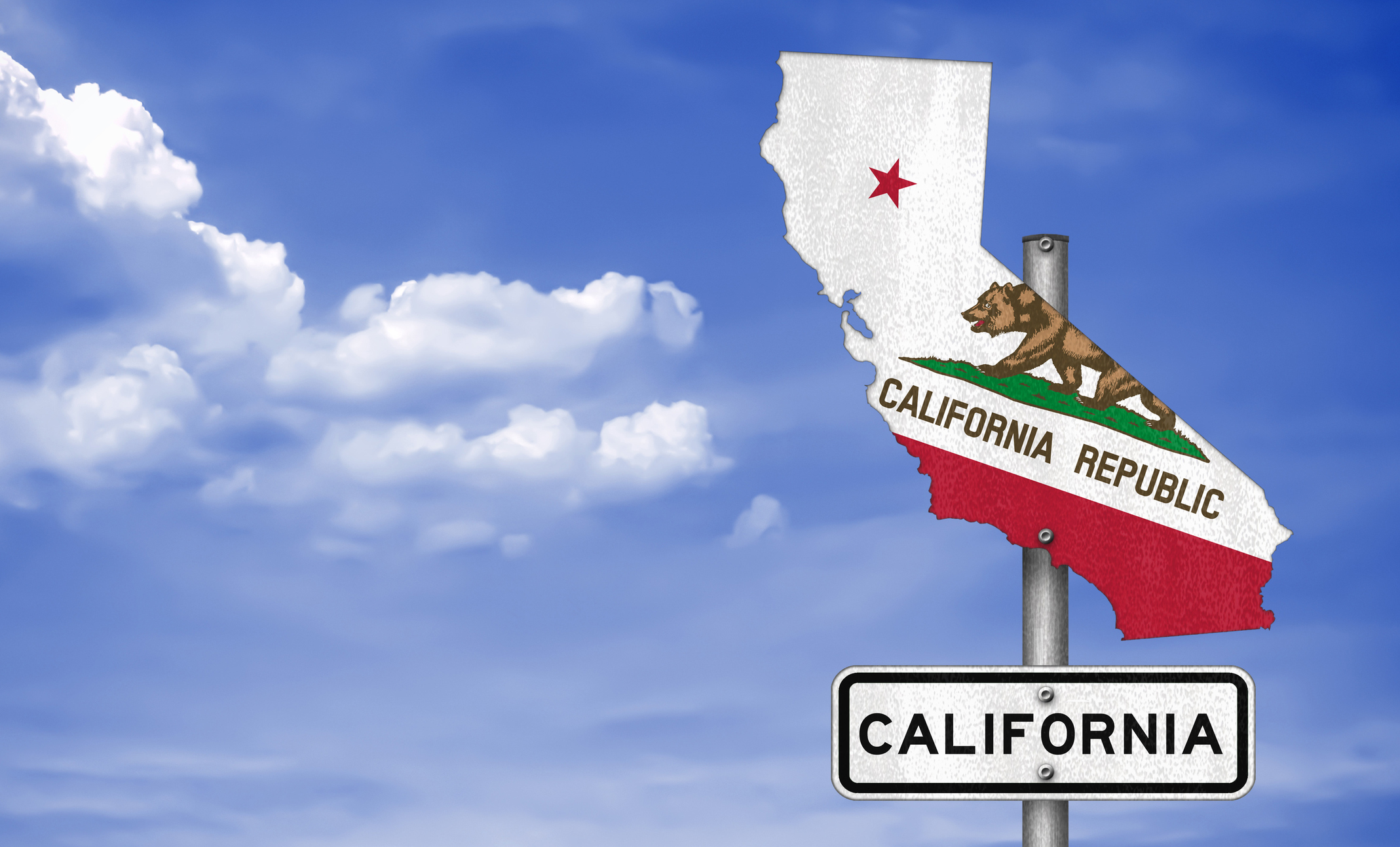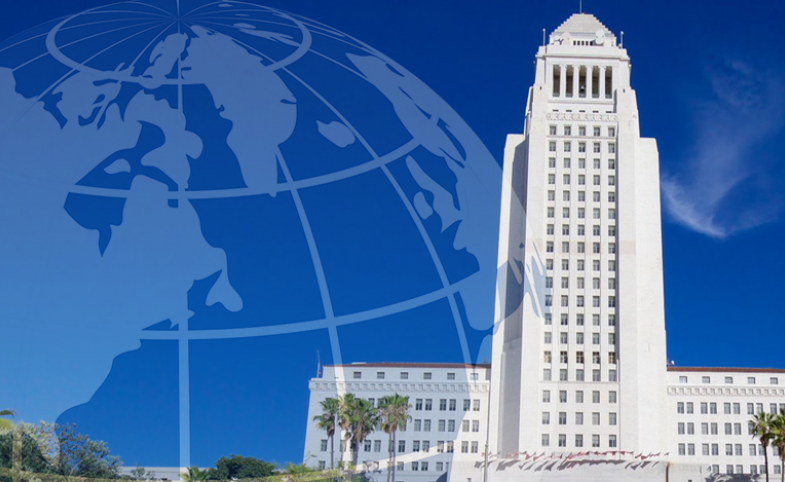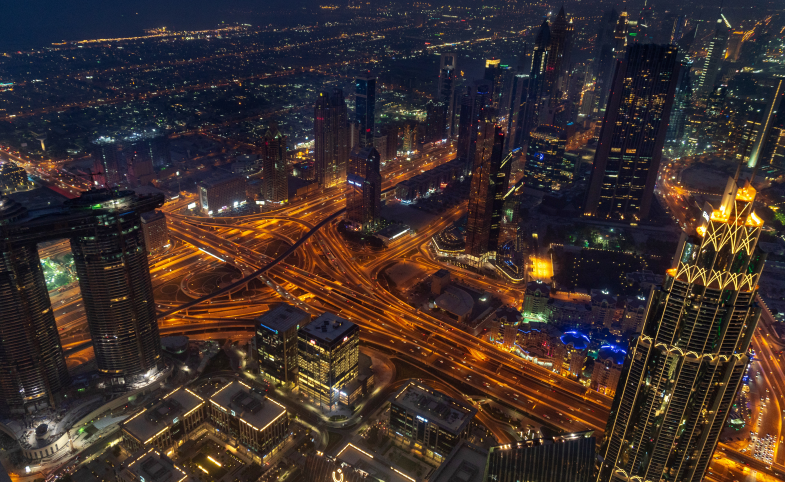To download a PDF of this paper, click here. Subnational Diplomacy, Climate Governance & Californian Global Leadership by Benjamin Leffel Introduction The traditionally nation-state-dominated arena of global...
KEEP READINGThumbnail Image:

To download a PDF of this paper, click here.
Building a Robust Capacity Framework for U.S. City Diplomacy
By Jay Wang and Sohaela Amiri
With cities increasingly poised – and being called upon – to play a greater role in addressing challenges at the international level, from climate change and immigration, to the health and security of citizens, there is a need to better understand the mechanisms through which cities become international actors and influencers. Cities have implementation power, from trade agreements to green energy. More broadly, there is a downward shift of power from the nation-state to cities. [1] This power provides a strong counterpoint to political gridlocks that we often see these days at the national level. Can city diplomacy be the platform through which cities assert themselves as global actors and advance their local constituencies’ global interests?
City diplomacy is generally understood as a form of subnational diplomacy. It is an interplay between “diplomatic and urban practice” [2] that seeks to impact the international environment in a way that benefits the safety, security, and prosperity of local citizens and advances their global interest and identity. As subnational actors, cities can also help to promote a nation’s international image and interest. [3] City diplomacy is achieved through cities’ engagement with other “glocal” actors and embodies a wide range of practices, including “facilitating communication, negotiating agreements, gathering information, preventing conflicts, and taking part in international society.” [4] The phenomenon is nothing new; what is new is that the nature and scope of city diplomacy have deepened and broadened. As U.S. cities are home to two thirds of the entire population, [5] the practice of city diplomacy has now become essential for local communities to thrive in a globalized society.
At the heart of realizing a city’s influence and impact on the world stage is crafting an effective global engagement strategy. So, what are the necessary skills, capabilities, and resources required for this emergent role? And how can city diplomacy be more strategically tied to cities’ international outlook and interests? In April 2018, the USC Center on Public Diplomacy, in partnership with the Los Angeles Mayor’s Office of International Affairs and with the support of the New York City Commissioner for International Affairs, brought together city leaders with international purview from 17 U.S. cities (including seven of the top ten by population) for a one-day workshop to share practices of city diplomacy and explore the opportunities and challenges facing U.S. cities’ global engagement agendas and strategies. The workshop delved into three topical areas, including the current state and scope of American cities’ international portfolio and engagement, capacity required for global engagement, and data analytics for city diplomacy. In this article, we discuss our key takeaways from the workshop and lay out suggestions as building blocks for effective city diplomacy in the future. City diplomacy is practiced through a variety of platforms and programs. Here we approach the concept and practice mainly from the perspective of city offices in charge of international affairs and generally refer to them henceforth as offices of International Affairs. We view such organizational setup less as an administrative unit of government, but more a builder of networks of public, private and civil actors for city’s global engagement.
At the heart of realizing a city’s influence and impact on the world stage is crafting an effective global engagement strategy.
FUNCTION-DRIVEN CITY DIPLOMACY
While American cities are playing a greater role on the world stage through a wide range of initiatives and activities under the rubric of city diplomacy, the practice is predominantly functionally driven as opposed to policy-oriented. That is city diplomacy programs are mainly built around functional purposes within a city. In many cities, to be sure, such activities are disparate and at times ad hoc efforts rather than being guided by and connected through a coherent set of city policies. We identify five key functions of city diplomacy as it is currently understood and practiced based on goals and organization: Economic Development; Diplomatic Representation and Protocol; Global Policy Collaboration and Action; Community Engagement and Civic Empowerment; and Hosting Special International Events. Among these five general functions, Economic Development and Diplomatic Representation and Protocol are broadly pursued across cities, while the strength of the rest varies based on the local and political context in each city.
Economic Development
Trade has always been at the heart of a city’s global engagement. Cities use their global ties to advance economic development, from tourism to foreign direct investment (FDI). In this regard, attention is given to bridging local and global businesses and investment opportunities through international programs. Bigger cities such as Los Angeles and New York have a broader approach to economic development to expand trade and FDI, while others may place their emphasis on helping small local businesses tap into international markets.
Diplomatic Representation and Protocol
Larger cities have a sizable consular corps that they are responsible for. There are 31 U.S. cities that host ten or more consulates, representing countries from six continents. [6] City offices of international affairs share the responsibility to represent the city among international audiences as well as playing host to diplomats and visits from foreign dignitaries. This is significant in the case of New York City, for instance, as it is home to the United Nations and a similarly large consular corps. Diplomatic representation provides opportunities to advance the global interests of local constituents through direct and indirect engagement with foreign decision-makers, publics, and influencers.
Global Policy Collaboration and Action
Concurrent with diplomatic representation, cities also try to align their priorities with their global connections and pursue their interests through collaboration, negotiation and collective action with counterparts. The most studied examples include networks such as the C40 cities, United Cities and Local Governments, and 100 Resilient Cities that tackle shared challenges, from climate change to countering extremism. For example, U.S. cities such as Los Angeles are part of Cities Alliance, Under2 Coalition, and the Global Covenant of Mayors. As a member of most of these networks, the city of Atlanta acknowledges the importance of collaboration networks for “urban resiliency and sustainability in the face of our changing climate,” [7] and participates in exchange summits to learn and share best practices.
Community Engagement and Civic Empowerment
Understanding that the vigor and diversity of a city’s population contributes to its global brand and influence, cities create and strengthen relationship with local constituencies through trust-building and civic empowerment initiatives. In this regard, cities with larger minority and immigrant communities have increased opportunities as they tap into these valuable assets for their city’s global engagement. Initiatives to build social cohesion such as capacity-building for immigrant or minority communities, gender equality, and democratic and civic participation fall under this category.
Hosting Special International Events
Hosting special international events is a global engagement strategy that enhances a city’s reach and influence. Cities regularly engage in a variety of cultural programs and high-profile events, from SXSW in Austin to “the Biennial of the Americas” hosted by Denver, that have strong implications for city diplomacy. This function is, for instance, an integral part of the work of Los Angeles as it will be hosting the 2028 Summer Olympics. For New York, the United Nations General Assembly and other UN-centric events allow the city to position itself as an influential global actor and engage with cross-sections of foreign and local publics.
FRAGMENTED PRACTICE WITH LIMITED RESOURCES
Despite broad agreement on the value of cities’ global engagement, the practice of city diplomacy varies based on the local context of a city and its capacity to bridge local practice to global influence. The political structure of any city is important as it affects the funding mechanisms for the office of international affairs, its stability and permanence. The dynamics between the Mayor’s office, boards and commissions, and various city departments impact the capacity of an office to practice city diplomacy as well. At a higher level, the offices of international affairs within cities also have an interest to form closer ties to other government entities such as the Department of State, Department of Justice, and other federal and local government agencies.
The spirit and practice of city diplomacy by offices of international affairs depend in large part on their placement within the local government structures. In this respect, the practice of U.S. city diplomacy is fragmented and lacks a coherent identity, because the structural location of such an office varies from city to city. As city diplomacy evolves and grows more prominent in the local milieu, there is the need to more clearly define the role and authority of the organizational setup and develop a structure of trust in its interfaces with other city offices.
Besides the characteristics of various government structure, capacity also means the skills/talents and resources that are available to lead and practice city diplomacy. Given the multiple functions of city diplomacy, city offices overseeing international affairs would require a mix of skills and talents, including most aptly backgrounds in trade and investment, public diplomacy and international affairs, and strategic communication. In addition to protocol formulation and compliance, there is also a need for having staff members who can better initiate and manage relations with stakeholders as well as forming and managing strategic partnerships and collaboration networks. As city diplomacy becomes a more strategic component of a city’s work, it will be important to bridge the current capability gap in research and evaluation in order to capture and assess the impact of city diplomacy efforts for strategic planning and operational improvement.
As is true for most nascent and emergent organizations, there is a sheer resource gap that affects city offices of international affairs. The structure of city governments, as explained above, plays a significant role in funding mechanisms and amounts available for city diplomacy. In this instance, funding is invariably intertwined with staff size. Other than the lever of increasing the number of staff members, cities see their partnerships and collaboration networks as a vital resource. From traditional sister city ties to recent issue-specific collaboration networks, cities are generally adept at partnerships, with both local and global, public and private entities. Given that partnership networks are a significant resource to cities, it is crucial for the offices of international affairs to more strategically manage this resource and grow partnerships with other cities as well as non-city actors including community organizations and businesses.
BUILDING CITY DIPLOMACY PRACTICES FOR THE FUTURE
City diplomacy is an invaluable mechanism for advancing the interests of local citizens through economic development, diplomatic engagement, and policy collaboration on the global stage. Fostering city diplomacy requires champion leadership, strategic investment and partnership, and support from citizens. Here we identify four trajectories to make city diplomacy a more strategic and robust aspect of local communities.
Toward a Policy-driven City Diplomacy
The current landscape of city diplomacy is diverse and primarily function-driven. This does not always allow for cities’ key global policy priorities to be integrated into a consistent set of actions for maximized impact. The geographic and political context of each city, as well as its resources and expertise inform the key global policy areas to focus on. In turn, when policy priorities inform the strategic direction of city diplomacy, the city can better integrate the use of resources and avoid siloed practices. The distinctive contribution of city offices with international purview becomes apparent when they pursue policies that have an interdependent global nature to them. This choice can become more strategically aligned with each city’s local policy needs to increase the integrity and effectiveness of the offices of international affairs while enhancing the global influence of the city.
Build Citizen Support Through Better Communication
All international engagement begins at home. Cities often face challenges as they try to communicate the importance of their global presence to local stakeholders. A city’s office of international affairs should become the bridge between citizens’ perceptions of their city’s global identity and local needs, and international policies and global agenda setting. Then, the office needs to communicate this role to constituents in a way that crystalizes the relevance and effectiveness of the office. In this age of information abundance, shaping such perceptions is less about making good arguments than sharing compelling and relatable narratives about how a city’s international engagement can enrich local residents’ lives. Devising such strategies requires not only a deep understanding of the residents’ motivations and imaginations concerning the city’s evolving identity and global image, but also a sustained effort to inform and educate on the city’s global connectedness, policy impact and strategic value.
Unlock Network Potential for City Diplomacy
For city offices of international affairs to become more effective institutions, the understanding and management of their prime resource, networks, is crucial. Global governance is increasingly dependent on formal and informal international networks of nonstate and subnational actors that form to tackle shared policy problems. The main components of such networked collaborations are gathering and dissemination of critical information, negotiating deals, conflict prevention and resolution. Cities, through their networks, have access to civic, public, and private capital as well as new ideas and innovative methods of problem solving that are invaluable for global governance. The offices of international affairs have an additional advantage in that they have both international, as well as local networks. This adds to the governing power of city networks globally. To tap into this power and maximize their global impact and influence, cities should use network concept and practice for the conduct of international affairs. To this end, there needs to be baseline analysis done to uncover how city-diplomacy networks are developed, mobilized and maintained, and ultimately how they result to effect global agenda setting, policy changes, and policy implementation.
Prepare for a More Data-driven City Diplomacy
In order to make more strategic policy decisions and to optimize resources, it is crucial that cities make better use of data. As mentioned above, this cannot be done in silos. Cities’ offices of international affairs need to coordinate with other city offices to manage, share, and analyze data. Additionally, systematic impact measurement and program evaluation can be better integrated into the offices’ strategic planning. The offices of international affairs can scope their own data needs and evaluation processes through prioritizing the impact of global policy areas that they tackle and understanding how this changes the city’s international image and influence. Cities already have access to an incredible amount of cross-cutting data. However, they need staff members who can harness existing data and turn it into actionable insight for decision-making. This calls for having a stronger research and evaluation arm as a part of the strategic planning team.
As cities’ global role and influence becomes more prominent, government officials and diplomatic scholars and practitioners are increasingly assessing the opportunities and potentials of city diplomacy. The global impact of subnational actors is especially important at a time when national-level actors and large international organizations face political and bureaucratic gridlocks. This is particularly true in countries more directly affected by the battle between nationalism and globalism. American cities generally engage globally through efforts in international trade, diplomatic representation and protocol, and global policy collaboration. Some city offices of international affairs also assume tasks related to civic empowerment or hosting special international events. By looking at current practices and capacity challenges, we suggest ways that U.S. cities can advance their practice of city diplomacy. The proposed capacity framework includes making city diplomacy more policy- and data-driven; increasing strategic communication efforts; and enhancing the understanding and management of global networks. All such efforts will elevate cities’ global engagement strategies for advancing the interests of local communities and ensuring the safety, well-being and prosperity of constituents.
View a PDF of this report here.
ENDNOTES
1. Katz, B., & Nowak, J. (2018). The New Localism: How Cities Can Thrive in the Age of Populism. Brookings Institution Press.
2. Acuto, M. (2016). City Diplomacy. In Constantinou, C., Kerr, P., & Sharp, P., The SAGE Handbook of Diplomacy (pp. 510-520). London: SAGE Publications Ltd. doi: 10.4135/9781473957930.n42
3. Wang, J. (2006). Localising public diplomacy: The role of sub-national actors in nation branding. Place Branding, 2(1), 32-42.
4. Acuto, M., De Kramer, H., Kerr, J., Klaus, I., Tabory, S., & Toly, N. (2018). Toward City Diplomacy: Assessing Capacity in Select Global Cities. Chicago Council on Global Affairs.
5. United States Census Bureau. (2015, March). We Are Gathered Here. Retrieved from https://www.census.gov/ newsroom/press-releases/2015/cb15-33.html
6. Embassy Pages.com. (n.d.). United States. Retrieved from https://www.embassypages.com/usa
7. Atlanta Mayor’s Office of International Affairs. (n.d.). Year in Review 2016|17. Retrieved from https://www.atlantaga. gov/Home/ShowDocument?id=27687











